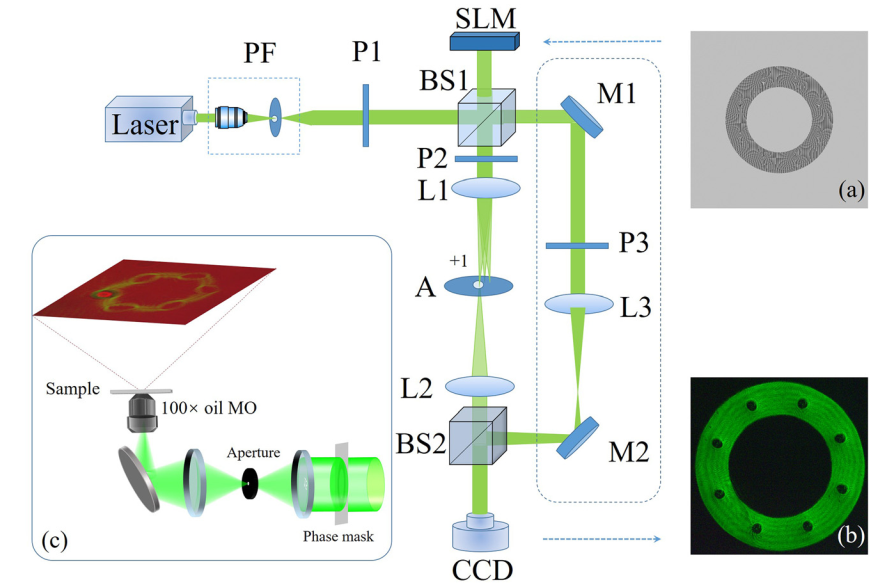Orbital angular momentum (OAM) carried by optical vortex (OV) has attracted considerable interests due to its excellent performance and various optical applications. To satisfy the applications, recent researches are mainly focused on OV lattice (OVL) which contains multiple OV units.
However, the dark core of OVL is barely investigated in atomic manipulation, which can generate the “wrench force” from the OAM. The “wrench force” is capable of trapping and rotating the micro-particle that has promising prospects in the applications of light-driven motors, detection of DNA rotation, and cell sorting.
A research team from Xi'an Institute of Optics and Precision Mechanics (XIOPM) of the Chinese Academy of Sciences (CAS) and Henan University of Science and Technology proposed a novel design to achieve the high-order OVL (HO-OVL), and the complex motion of microparticles was firstly realized. The results were published in NANOPHOTONICS.
According the researchers, the mode-controllable HO-OVL was generated by two modified OV beams. Specifically, The two OV beams were artificially shaped and any arbitrary structures can be obtained, which is considerably essential for the construction of OVL. More importantly, the OVL need to be divided into two terms – amplitude and phase. Therefore, each term was allowed to be individually modulated and satisfy the requirements for generating HO-OVL.
An experiment was also performed based on the theoretical method. The incident beam was firstly collimated and modulated by a various of optical devices before interacting with the testing sample, and eventually recorded by charge-coupled device. Meanwhile, a spherical beam was also employed to verify the existence of OVs.
After the preparation, the trapping and rotating of micro-particle was demonstrated by using yeast cells. The e topological charge of the OV in the lattice generated by the experimental system was up to 51, exceeded the limit of the traditional OVL. The high topological charge supported the sufficient OAM to manipulate the yeast cells. The results indicate that the yeast cells are trapped and rotated by the proposed HO-OVL, which is the first time that complex motion of microparticles via OVL was realized.
The research can pave the way for future trapping and manipulation of multiple microparticles, particularly in biosciences.
This work was supported by the National Natural Science Foundation of China, State Key Laboratory of Transient Optics and Photonics and Key Scientific Research Projects of Institutions of Higher Learning of Henan Province Education Department.
 The schematic of the experimental setup. (Image by XIOPM)
The schematic of the experimental setup. (Image by XIOPM)
Download: